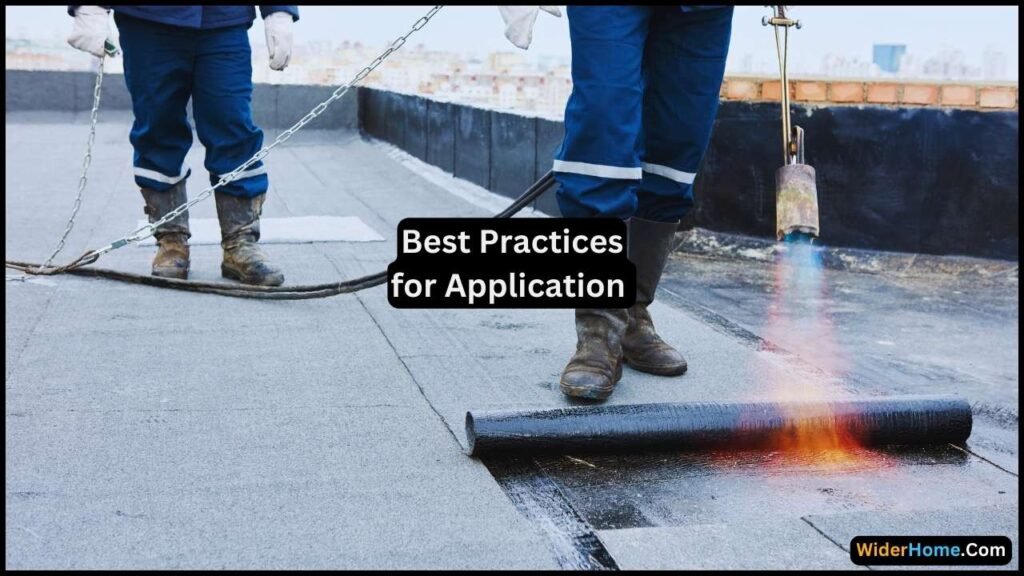How Long Does Roofing Tar Take to Dry?

Roofing tar is a thick, sticky substance commonly used to waterproof roofs and provide protection from the elements. It acts as a barrier against moisture, helping to prevent leaks and prolong the life of roofing materials.
Understanding how long does roofing tar take to dry is crucial for anyone involved in roofing projects. It ensures that the job is done correctly and that the roof remains durable.
Knowing the drying times can help homeowners and contractors plan their work more efficiently and avoid potential problems caused by applying additional layers too soon.
Factors Affecting Drying Time of Roofing Tar
Several key factors affect how long roofing tar takes to dry. First, the type of roofing tar you use can make a difference. For example, asphalt-based tar tends to dry faster than coal tar. Next, environmental conditions are crucial.
If it’s a hot, sunny day, the tar may dry quickly, while high humidity or cooler temperatures can slow the process down significantly. Wind speed also matters; a gentle breeze can help evaporate moisture faster.
Another critical factor is the thickness of the tar layer applied. A thin layer will dry more quickly than a thick one, so it’s essential to consider how much tar you’re putting down.
Finally, the techniques for applying the tar, like spreading it evenly or ensuring no puddles, can also affect how long it takes to dry. Understanding these factors can help ensure your roofing project goes smoothly and the tar dries appropriately.
General Drying Times

Knowing how long it will take to dry when working with roofing tar is crucial. The drying process can be divided into two key stages: the initial set time and the full cure time.
Initial Set Time
The initial set time is when the tar becomes firm, usually within a few hours after application. The surface may feel tacky during this time, but it will lose its stickiness as it dries.
Full Cure Time
Full cure time is when the roofing tar completely dries and reaches maximum strength. This time can vary depending on the type of tar used, the thickness of the application, and environmental conditions. For example, asphalt-based tar generally takes longer to cure than coal tar.
The complete cure should take a few days to weeks in ideal conditions. However, temperature, humidity, and wind can affect this timeframe, so it’s essential to consider these elements when planning your roofing project.
Best Practices for Application of Roofing Tar

Following a set of best practices is vital to ensuring the effective application and optimal drying of roofing tar.
Preparing the Surface
Before applying roofing tar, the surface must be thoroughly cleaned and prepared. Remove any dirt, debris, old roofing materials, or loose granules that could impede adhesion. Depending on the roofing system type, a power washer or a stiff-bristle broom may be necessary.
Additionally, check for moisture on the surface; tar should not be applied to wet surfaces as this can significantly affect adhesion and drying times.
Recommended Conditions for Applying Roofing Tar
The ideal conditions for applying roofing tar typically include a temperature range between 50°F and 85°F (10°C to 29°C). Avoid applying tar during extreme temperatures, either hot or cold, as this can lead to improper curing.
Low humidity levels are also preferred, as high humidity can prolong drying time. Windy conditions can aid in the drying process but may also blow dust or debris onto the surface, compromising the application.
Tips for Ensuring Optimal Drying
When applying roofing tar, it’s vital to achieve the correct thickness: applying it too thin may result in inadequate coverage, and using it too thick can lead to extended drying times. For best results, follow manufacturer guidelines regarding application thickness.
Use proper techniques such as brushes, rollers, or squeegees, ensuring an even distribution of the material. Finally, it is advisable to avoid foot traffic or additional work on the roof until the tar has fully cured to prevent any damage or disruption to the drying process.
Proper maintenance of these best practices can significantly enhance the performance and longevity of roofing tar applications.
Signs That Roofing Tar Is Dry

There are several easy signs you can look for to determine if roofing tar is dry.
Visual Indicators
First, check the surface appearance. A dry layer of tar typically appears matte and firm, whereas wet or uncured tar looks shiny and may still be sticky. Additionally, if you notice that the color has darkened or changed, it may signal that drying is progressing.
Touch and Feel Tests
Another straightforward method is to gently touch the tar surface. If your fingers come away clean and the tar feels solid without any tackiness, it’s likely to dry. However, if the surface sticks to your fingers, it still needs more time to cure.
Recommendations for Testing Before Overlaying
Ensuring the tar is fully dry before placing any additional roofing materials or layers is essential. As a good rule of thumb, wait at least 24-48 hours after application before conducting any tests.
Always refer to the manufacturer’s recommendations for the specific product, as different types of tar may have varying drying times. By observing these signs, you can confidently assess the readiness of your roofing tar for the next steps in your project.
Also Read: Roof Maxx Pros and Cons
FAQs
How long does it take for roofing tar to dry completely?
The drying time for roofing tar can vary significantly based on several factors, including the type of tar, the thickness of the application, and environmental conditions. Generally, you can expect an initial set time within a few hours and a complete cure time anywhere from a few days to a few weeks.
Can I walk on the tar before it dries?
It’s advisable to avoid foot traffic on freshly applied roofing tar until it has fully cured. Walking on uncured tar can damage the surface and affect the adhesion of subsequent layers. Waiting 24-48 hours before testing the surface for dryness is best.
Does weather affect the drying time?
Yes, weather plays a crucial role in the drying process. High humidity and extreme temperatures can prolong drying times, whereas mild temperatures and low humidity levels create favorable conditions for quicker drying. Windy conditions can assist in drying but may also introduce debris to the tar surface.
What can I do if it’s taking too long to dry?
If you find that roofing tar is taking longer to dry than expected, ensure that the application was done correctly—check the thickness and surface preparation. Improving air circulation around the area and providing optimal conditions can also help speed up drying.
If issues persist, consulting the manufacturer’s guidelines may provide insights specific to the product used.
Conclusion
In conclusion, understanding the drying process of roofing tar is essential for anyone involved in roofing projects. You can ensure a successful application by keeping in mind the various factors that influence drying times, such as the type of tar, environmental conditions, and application techniques. Following best practices for preparation, application, and testing for dryness can help achieve optimal results, making your roofing work more efficient and durable. When you take the time to properly manage these aspects, you’ll not only enhance the life of your roofing but also enjoy peace of mind, knowing you’ve done the job right.
